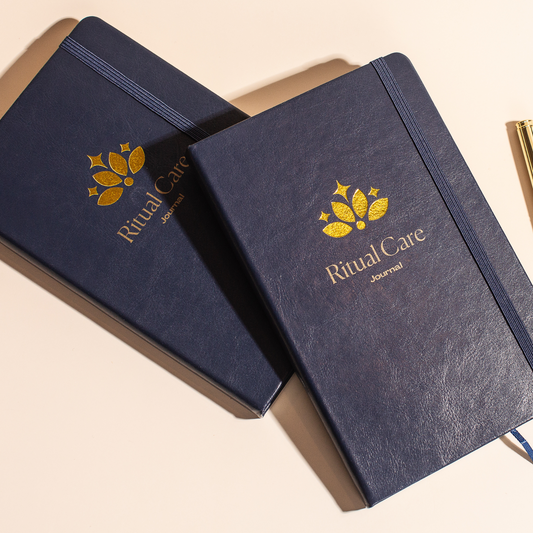“You’re grounded.”
Do you remember when that statement was a bad thing? If my parents said those words to me when I was a teenager, I knew that I had messed up in a big way.
These days, though, I take those words as a compliment.
While in the midst of fighting this ongoing pandemic, suffering from the consequences of extreme weather, dealing with the polarization that comes with masks and vaccinations, and at the same time working through the struggles of “normal” life, it’s hard to feel stable and supported. If anything, you might feel like you’re spinning, upside down, inside out, floating, or a combination of them all.
When you’re feeling upended and unsettled, you need a way to settle your mind and body. By engaging the areas of the brain associated with your five senses of sight, smell, sound, taste, and touch, you immediately put yourself into the present moment. Studies show that when you keep returning to the present, you feel better. When you’re present, you’re not worrying about what’s ahead and you’re not looking back at the past.
When you feel like you need to settle down and gain some stability, try these techniques. Remember to do your best to bring your full attention to the practice in order to reap the benefits.
Research indicates that slow breathing improves your psychological and physiological well-being. Fortunately, you can access this simple practice anytime, anywhere. Try taking a slow inhale through your nose and a slower exhale through your mouth. It might be helpful to count, so see if you can breathe in for four slow counts and then breathe out for six to eight counts.
Try slipping off your shoes and socks and going for a mindful walk in the grass, at the beach, on soil, or anywhere your feet can access the earth without stepping on anything sharp. As you walk, pay attention to the feeling of your feet on the ground. Notice the temperature and texture of the earth, and notice how your muscles move.
Studies show that making contact with the earth can lessen pain and improve your mood.
https://www.instagram.com/p/Cdi9pMXF_7R/
Used often throughout the research-backed course Mindful Self-Compassion, soothing touch engages the parasympathetic nervous system and calms the body down. Try placing a hand on your heart, and tune into the feeling of your hand. See if you can notice your heart beating. Notice what it feels like to gently pat yourself or to rub your chest in a circular motion.
You can also try placing both hands on the heart, or you can place your hands in other areas of the body. Try gently cupping your cheek, offering soothing touch to your abdomen, holding your own hands, or giving yourself a hug.
Find a safe spot on the grass or at the beach, and take a load off by lying down. If you’re comfortable doing so, close your eyes and tune into the feeling of your body against the earth. Perhaps scan the body from head to toe, and see if you can curiously and non-judgmentally notice how each body part feels.
After you scan the body, open your eyes and notice the sky and whatever else you see in your field of vision. Feel the air and breeze, and notice the sun against your skin.
When’s the last time you truly tasted your food? If you’re like many of us, you might eat while you’re doing something else, like reading, scrolling through your news feed, watching a show, or carrying on a conversation with someone.
Eating a meal mindfully brings you back to the present. It also makes the food more enjoyable, because you’re actually tasting it. So, take a beat before you eat your beets! Pause and look at the colors and textures of your bite. Inhale to notice how it smells and then take a bite. Notice the texture and taste of the food, and be curious about how your tongue moves the food around. Swallow and pause before sending your fork after the next bite.
To learn more about mindful eating, check out Compassion It’s 30-Day Challenge.
Often referred to as EFT, or Emotional Freedom Technique, gently tapping the body on specific acupressure points of the head, face, and torso has been shown to decrease anxiety and improve post-traumatic stress disorder. Unlike acupuncture, you can learn the technique and administer it to yourself whenever you need it.
If you think home-grown tomatoes or fragrant roses are the best rewards for gardening, think again. A 2017 meta-analysis suggests that gardening decreases anxiety and depression, reduces body mass index, and improves life satisfaction.
If you live in an apartment without space for a garden, google “community garden” and your town name to see if you can reserve a small garden plot. You can also ask around to see if any of your friends need help with their gardens.
Find out what happens when you incorporate these techniques into your daily life. I bet you’ll find inner strength and stability, and you’ll be grounded...in a good way.
Enhance your well-being with guided meditations and personalized practices, available now in the Chopra App.
Do you remember when that statement was a bad thing? If my parents said those words to me when I was a teenager, I knew that I had messed up in a big way.
These days, though, I take those words as a compliment.
While in the midst of fighting this ongoing pandemic, suffering from the consequences of extreme weather, dealing with the polarization that comes with masks and vaccinations, and at the same time working through the struggles of “normal” life, it’s hard to feel stable and supported. If anything, you might feel like you’re spinning, upside down, inside out, floating, or a combination of them all.
When you’re feeling upended and unsettled, you need a way to settle your mind and body. By engaging the areas of the brain associated with your five senses of sight, smell, sound, taste, and touch, you immediately put yourself into the present moment. Studies show that when you keep returning to the present, you feel better. When you’re present, you’re not worrying about what’s ahead and you’re not looking back at the past.
When you feel like you need to settle down and gain some stability, try these techniques. Remember to do your best to bring your full attention to the practice in order to reap the benefits.
1. Take three slow, intentional breaths
Research indicates that slow breathing improves your psychological and physiological well-being. Fortunately, you can access this simple practice anytime, anywhere. Try taking a slow inhale through your nose and a slower exhale through your mouth. It might be helpful to count, so see if you can breathe in for four slow counts and then breathe out for six to eight counts.
2. Take a walk...barefoot
Try slipping off your shoes and socks and going for a mindful walk in the grass, at the beach, on soil, or anywhere your feet can access the earth without stepping on anything sharp. As you walk, pay attention to the feeling of your feet on the ground. Notice the temperature and texture of the earth, and notice how your muscles move.
Studies show that making contact with the earth can lessen pain and improve your mood.
3. Soothe yourself
Used often throughout the research-backed course Mindful Self-Compassion, soothing touch engages the parasympathetic nervous system and calms the body down. Try placing a hand on your heart, and tune into the feeling of your hand. See if you can notice your heart beating. Notice what it feels like to gently pat yourself or to rub your chest in a circular motion.
You can also try placing both hands on the heart, or you can place your hands in other areas of the body. Try gently cupping your cheek, offering soothing touch to your abdomen, holding your own hands, or giving yourself a hug.
4. Lie on the ground
Find a safe spot on the grass or at the beach, and take a load off by lying down. If you’re comfortable doing so, close your eyes and tune into the feeling of your body against the earth. Perhaps scan the body from head to toe, and see if you can curiously and non-judgmentally notice how each body part feels.
After you scan the body, open your eyes and notice the sky and whatever else you see in your field of vision. Feel the air and breeze, and notice the sun against your skin.
5. Eat a mindful meal
When’s the last time you truly tasted your food? If you’re like many of us, you might eat while you’re doing something else, like reading, scrolling through your news feed, watching a show, or carrying on a conversation with someone.
Eating a meal mindfully brings you back to the present. It also makes the food more enjoyable, because you’re actually tasting it. So, take a beat before you eat your beets! Pause and look at the colors and textures of your bite. Inhale to notice how it smells and then take a bite. Notice the texture and taste of the food, and be curious about how your tongue moves the food around. Swallow and pause before sending your fork after the next bite.
To learn more about mindful eating, check out Compassion It’s 30-Day Challenge.
6. Try tapping
Often referred to as EFT, or Emotional Freedom Technique, gently tapping the body on specific acupressure points of the head, face, and torso has been shown to decrease anxiety and improve post-traumatic stress disorder. Unlike acupuncture, you can learn the technique and administer it to yourself whenever you need it.
7. Garden
If you think home-grown tomatoes or fragrant roses are the best rewards for gardening, think again. A 2017 meta-analysis suggests that gardening decreases anxiety and depression, reduces body mass index, and improves life satisfaction.
If you live in an apartment without space for a garden, google “community garden” and your town name to see if you can reserve a small garden plot. You can also ask around to see if any of your friends need help with their gardens.
Find out what happens when you incorporate these techniques into your daily life. I bet you’ll find inner strength and stability, and you’ll be grounded...in a good way.
Enhance your well-being with guided meditations and personalized practices, available now in the Chopra App.






















